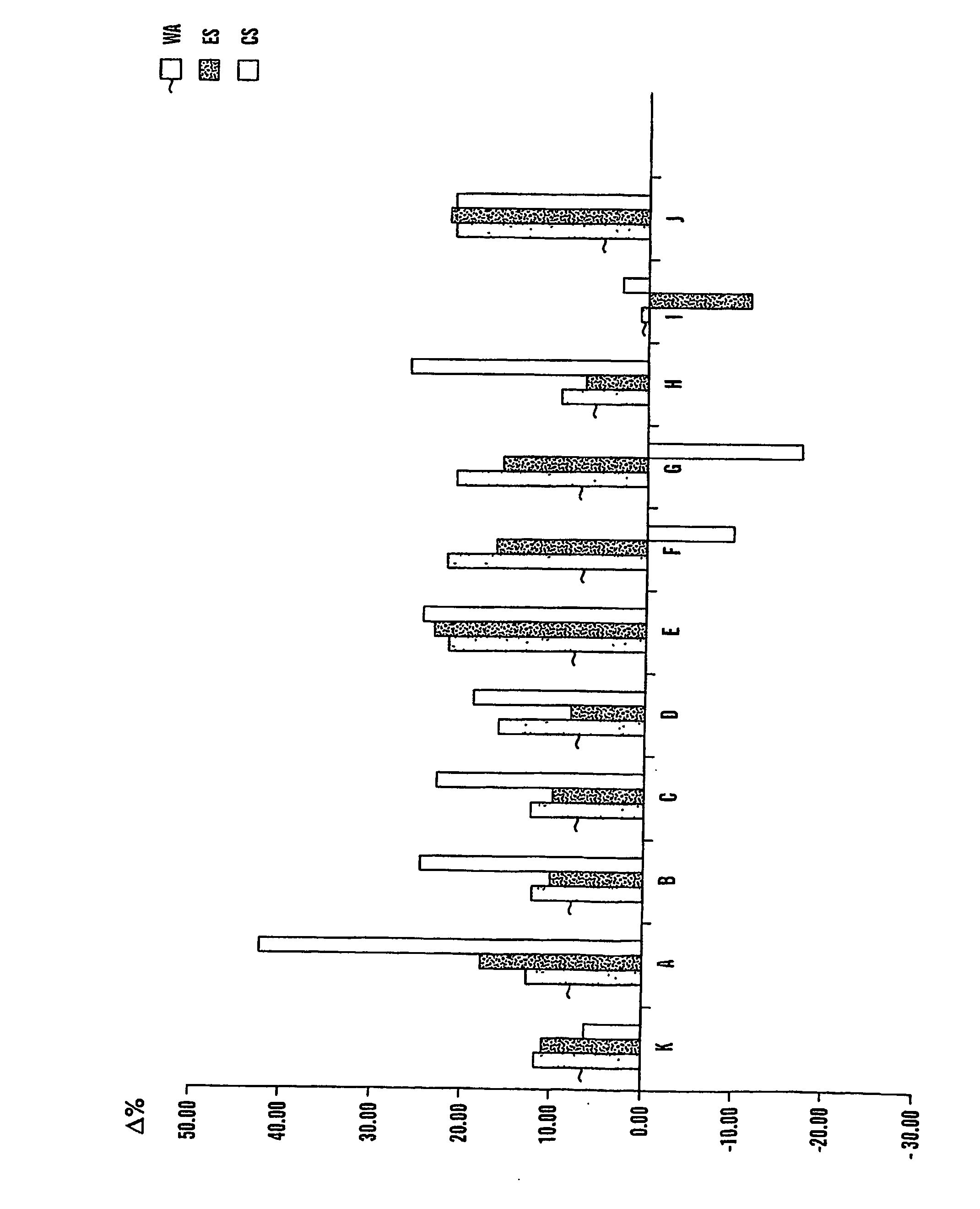Emulsions for lignocellulosic products, methods of their manufacture, improved lignocellulosic products and methods for their manufacuture
a technology of lignocellulosic products and emulsions, which is applied in the direction of cellulose adhesives, mixing gases/vapours with solids, and ratio control, etc. it can solve the problems of buckling or creep in the final wood or tile overlay, swelled osb, and deterioration of panels, like wood and other lignocellulosic products
- Summary
- Abstract
- Description
- Claims
- Application Information
AI Technical Summary
Benefits of technology
Problems solved by technology
Method used
Image
Examples
Embodiment Construction
[0018] Emulsions described herein are useful in improving the water resistance of lignocellulosic products, thus ameliorating the detrimental effects that absorbed water can have on such products, including dimensional instability (swelling) and biological degradation. Optionally, these emulsions may include preservatives that are not themselves water-repellant, the emulsions serving as carriers for delivering the preservatives into lignocellulosic products e.g., lumber, and in inhibiting the leaching of such preservatives from such products thereafter.
[0019] The emulsions described herein result from the combination of a wax component comprising a nonsaponifiable wax, a saponifiable wax, a saponifier, an alkyl phenol component, a dispersant / surfactant such as a phenate salt, a carboxymethylcellulose, and water, which are formed into an emulsion with the wax component becoming the discontinuous phase. These wax-in-water emulsions may be added to a mixture of lignocellulosic materia...
PUM
| Property | Measurement | Unit |
|---|---|---|
| Fraction | aaaaa | aaaaa |
| Fraction | aaaaa | aaaaa |
| Fraction | aaaaa | aaaaa |
Abstract
Description
Claims
Application Information
 Login to View More
Login to View More - R&D
- Intellectual Property
- Life Sciences
- Materials
- Tech Scout
- Unparalleled Data Quality
- Higher Quality Content
- 60% Fewer Hallucinations
Browse by: Latest US Patents, China's latest patents, Technical Efficacy Thesaurus, Application Domain, Technology Topic, Popular Technical Reports.
© 2025 PatSnap. All rights reserved.Legal|Privacy policy|Modern Slavery Act Transparency Statement|Sitemap|About US| Contact US: help@patsnap.com

